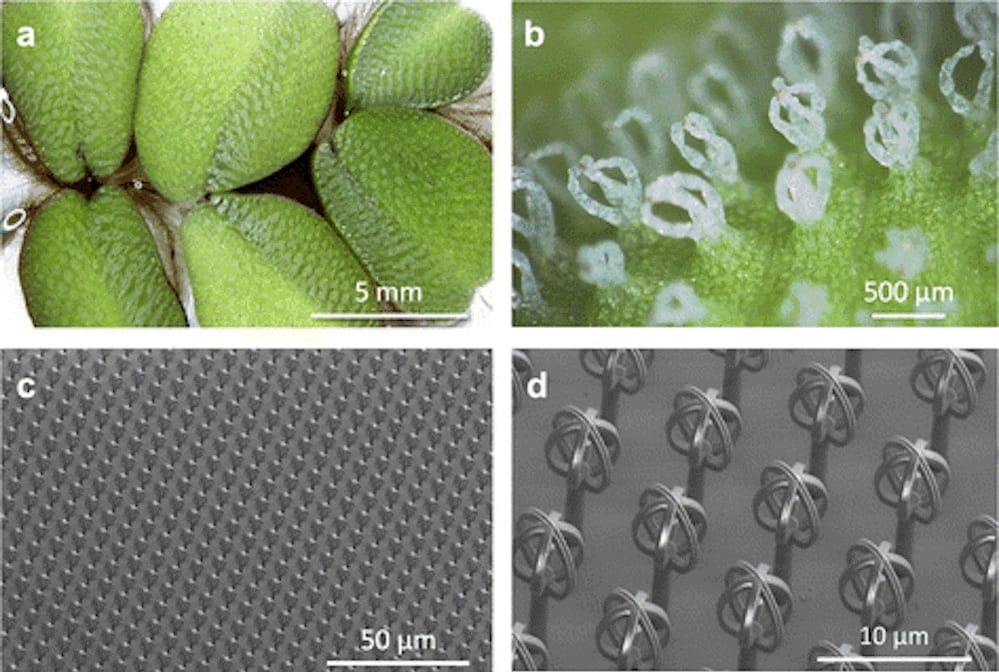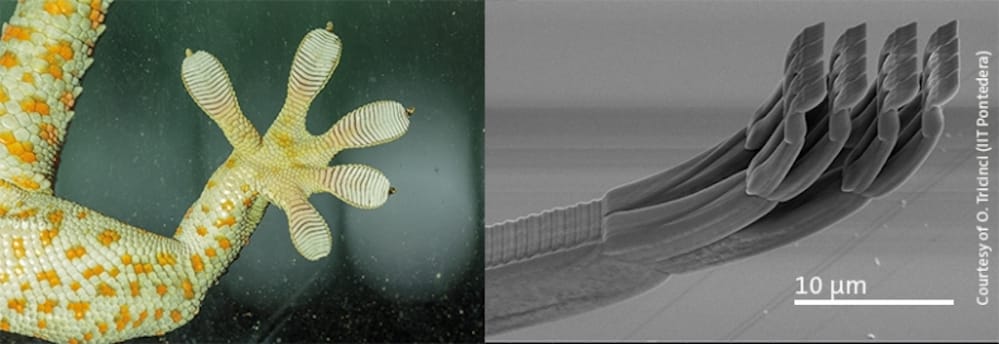
Nanoscribe’s customers are leveraging the company’s powerful 3D printer to duplicate features found previously only in nature.
Nanoscribe is an unusual 3D printer company in that it has an extremely small print volume. But that is most suitable for their print resolution, which happens to be also extremely precise. Their process can 3D print structures as small as 0.25 microns, or 0.00025mm, far smaller than you can resolve with your eyes. We earlier reviewed their process here.
This makes their machine, the Photonic Professional GT, ideal to 3D print nanostructure of all sorts.
As you might imagine, their equipment is used to produce micro machines, but there is now another interesting use case that I hadn’t considered.
It turns out that some of their customers are using the principle of biomimicry, in which unusual biological solutions, evolved over millennia, are duplicated using the ability to print very small things.
There are three examples recently mentioned by the company.

One was attempted by researchers at the Italian Institute of Technology in Pontedera, where they observed the amazing capabilities of Geckos to stick to surfaces using an unusual mechanical system on their paws.
The researchers were able to more or less duplicate this capability by 3D printing the very tiny Gecko toe surface. And if you can 3D print a sticky toe, you can 3D print all kinds of sticky shapes.
The second biomimicry application involves a sensor mechanism. Researchers at the Oak Ridge National Lab and the Georgia Institute of Technology attempted to duplicate the chemical sensory apparatus found on certain male moths, which turn out to be highly sensitive, partly due to their micro shapes.
These shapes were duplicated using Nanoscribe technology and could herald a new type of chemical sensor mechanism.
Finally, researchers have used their technology to duplicate a plant leaf’s capability to waterproof a surface.
These are fascinating examples of how a new 3D printing technology can be used to develop products and technologies that was not previously feasible. One wonders shat else might be conceived with this tech.
Via Nanoscribe

